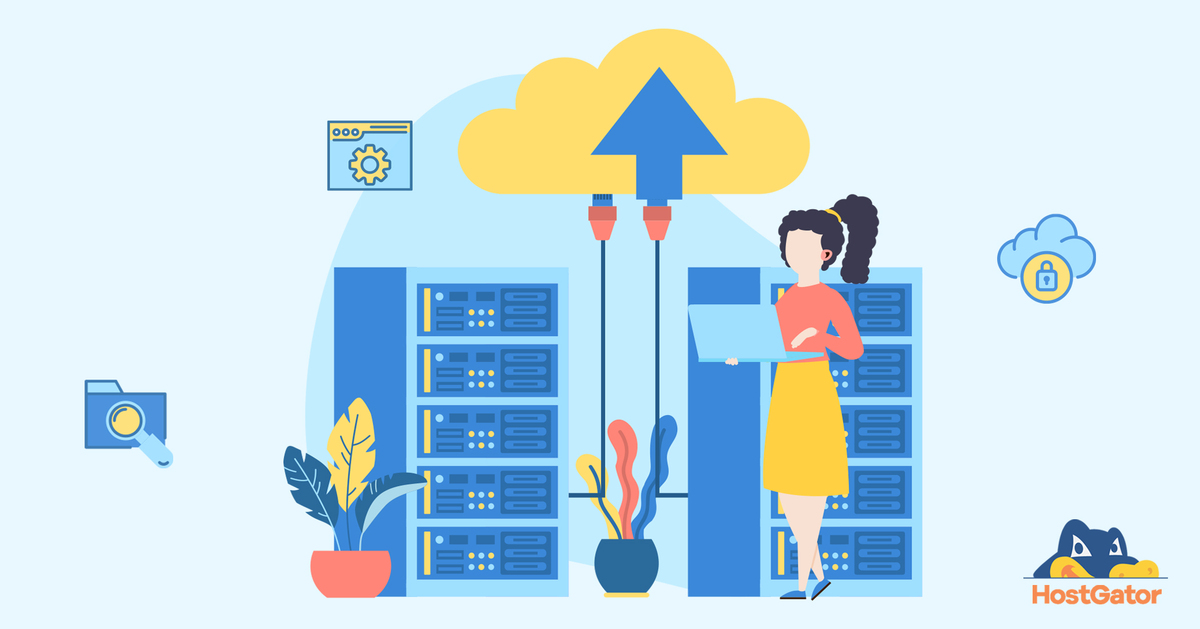The digital landscape has evolved rapidly, with cloud hosting emerging as a cornerstone of modern IT infrastructure. As businesses rely on cloud-based solutions, robust, reliable, and scalable hosting services have become paramount.
Cloud hosting load balancing plays a vital role in ensuring the performance of these services, enabling organizations to maintain high availability and optimal user experiences.
What is Cloud Hosting?
Cloud hosting is totally different from how hosting has been handled in the past. It uses a network of interconnected virtual and physical servers to distribute computing resources efficiently. This distributed architecture forms the basis for scalable, flexible, and cost-effective hosting solutions.
In simpler terms, your website is hosted across multiple servers online, making it easier to access and upgrade as your audience grows.
Key Aspects of Cloud Hosting Include:
- Virtualization: The abstraction of physical hardware into virtual instances.
- Resource Pooling: Shared computing resources that can be dynamically allocated.
- On-Demand Scalability: The ability to change resources as needed.
- Pay-Per-Use Model: Cost structures based on actual resource consumption.
While cloud hosting offers numerous advantages, it presents unique challenges, particularly in managing high traffic volumes and ensuring consistent performance across distributed systems.
How Cloud Load Balancing Works
Cloud load balancing operates on sophisticated algorithms that optimize resource utilization and response times. The process typically involves the following steps:
- Request Reception: The load balancer receives incoming website traffic.
- Server Analysis: Available servers are evaluated based on health and current load.
- Routing Decision: Requests are directed to the most appropriate server.
- Continuous Optimisation: The load balancer adjusts routing in real-time based on changing conditions.
This essentially translates to faster web page load times and sustained uptime for your website. This means your website has less chance of slowing down or crashing due to increased traffic.
Types of Load Balancing in Cloud Hosting
Several load balancing methodologies are employed in cloud hosting environments, each suited to specific use cases and requirements:
-
Network Load Balancing
Operating at the OSI model’s transport layer (Layer 4), this load balancing distributes traffic based on IP address and port information. This method is particularly effective for handling high TCP and UDP traffic volumes.
-
Application Load Balancing
Working at the application layer (Layer 7), this approach allows for more nuanced traffic distribution based on the content of requests. It enables advanced routing strategies, such as directing specific requests to specialized servers.
-
Global Server Load Balancing (GSLB)
GSLB extends load balancing across geographically distributed data centers. It optimizes user experience by routing requests to the nearest or most responsive data center, reducing latency and improving performance for global user bases.
-
Hybrid Cloud Load Balancing
This methodology bridges on-premises and cloud-based resources, allowing organizations to leverage private and public cloud infrastructure. Hybrid cloud load balancing facilitates seamless resource scaling and flexibility in workload distribution.
Read More: Common Cloud Hosting Myths
Benefits of Cloud Hosting Load Balancing
Cloud hosting load balancing significantly enhances the reliability of cloud-based services through several mechanisms:
-
High Availability
Load balancing lowers the risk of single points of failure by spreading data across several computers. If one server becomes unavailable, others can seamlessly handle the workload, ensuring continuous service availability.
-
Scalability
Cloud load balancing facilitates dynamic scalability, allowing systems to adapt to fluctuating traffic volumes. This elasticity ensures consistent performance during peak usage periods and optimizes resource utilization during quieter times.
-
Optimised Resource Utilisation
Efficient workload distribution prevents individual servers from becoming overwhelmed, maximizing the system’s performance. This optimization contributes to improved response times and overall system stability.
-
Fault Tolerance
Load balancers continuously monitor server health and redirect traffic from failed or underperforming servers. This proactive approach minimizes service disruptions and enhances overall system resilience.
Cloud Server Reliability: A Holistic Approach
While load balancing is a critical component of cloud server reliability, it operates within a broader ecosystem of reliability-enhancing technologies and practices:
-
Redundancy
Cloud hosting environments typically implement redundancy at multiple levels, including data replication and service duplication across different availability zones or regions. This redundancy ensures that services remain operational even in the face of localized failures.
-
Automated Failover
In conjunction with load balancing, automated failover mechanisms detect server failures and redirect traffic to healthy servers without manual intervention. This rapid response capability minimizes downtime and maintains service continuity.
-
Data Backup and Recovery
Regular data backups and efficient recovery processes are crucial to cloud hosting reliability. These steps ensure that data can be quickly recovered if it is lost or damaged.
-
Continuous Monitoring and Analytics
Advanced monitoring tools provide real-time insights into system performance, resource utilization, and potential issues. This approach allows timely interventions and optimizations to maintain high reliability.
Maximising Cloud Hosting Uptime
Cloud hosting uptime is a critical metric for businesses relying on cloud-based services. Multiple ways load balancing maximizes uptime:
-
Traffic Surge Management
Load balancers efficiently distribute sudden spikes in traffic across available resources, preventing server overloads that could lead to downtime.
-
Predictive Scaling
Advanced load balancing systems can anticipate traffic patterns and proactively adjust resource allocation, ensuring optimal performance during expected peak periods.
-
Geographically Distributed Load Balancing
By leveraging globally distributed resources, cloud hosting providers can route traffic to the most responsive data centers, minimizing the impact of regional issues on overall uptime.
-
Rapid Disaster Recovery
In a significant outage, load balancing facilitates quick recovery by redirecting traffic to operational resources, minimizing service interruptions.
Challenges in Implementing Cloud Hosting Load Balancing
Although load balancing for cloud hosting has many advantages, there are also specific issues that businesses need to deal with:
-
Configuration Complexity
Implementing and managing load balancing in complex cloud environments requires expertise. A misconfiguration can lead to suboptimal website performance or security vulnerabilities.
-
Cost Management
While load balancing can optimize resource utilization, improper configuration or over-provisioning can lead to unnecessary costs. Proper planning and oversight are necessary to keep costs in control.
-
Security Considerations
If not properly secured, load balancers can potentially introduce new attack vectors. Strong security measures, like encryption, are essential.
-
Data Consistency
It can be challenging to keep data consistent across multiple servers, particularly for applications requiring real-time synchronisation.
Read More: Benefits of Managed Cloud Hosting
Emerging Trends in Cloud Hosting Load Balancing
Cloud hosting load balancing evolves with technology and business changes.
-
AI-Driven Load Balancing
AI algorithms are being integrated into load-balancing systems, enabling more sophisticated, predictive traffic management.
-
Edge Computing Integration
Load balancing is expanding to encompass edge computing resources, bringing content and processing closer to end-users for reduced latency and improved performance.
-
Container-Native Load Balancing
With the rise of containerized applications, load-balancing solutions are adapting to provide more granular control over traffic distribution at the container level.
-
Multi-Cloud Load Balancing
As organizations adopt multi-cloud strategies, load-balancing solutions are evolving to manage traffic across multiple cloud providers, optimizing performance and costs.
Conclusion
Cloud hosting load balancing is a cornerstone of reliable and high-performance cloud computing. By efficiently distributing workloads, ensuring high availability, and facilitating scalability, load balancing enables organisations to leverage the full potential of cloud hosting while maintaining robust and responsive services.
At HostGator, we make web hosting simple and reliable. Our cloud hosting solutions offer unbeatable uptime, scalability, and performance. With our user-friendly tools and 24/7 support, you can grow your company while we deal with complexities.









